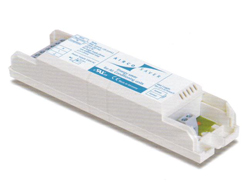Electronic Control Unit, which adds
State of the Art intelligence to Air Conditioning Systems.
 Air conditioning is one of the largest energy consumers in the residential and industrial sectors. Thousands of air conditioners put high demands on the electricity networks. On a smaller scale, air conditioning probably accounts for a significant part of your energy bill. Many existing air conditioners are old and quite inefficient technology. Although improved technology has become available in more expensive systems ( inverter technology), the payback time of these systems is very long.
Air conditioning is one of the largest energy consumers in the residential and industrial sectors. Thousands of air conditioners put high demands on the electricity networks. On a smaller scale, air conditioning probably accounts for a significant part of your energy bill. Many existing air conditioners are old and quite inefficient technology. Although improved technology has become available in more expensive systems ( inverter technology), the payback time of these systems is very long.
Instead of investing a lot of money into an expensive new system, there is an easy and affordable way to improve energy efficiency in your unit – UPGRADE it with an AIRCOSAVER.
Shortcomings of Typical AC Systems
When switched on, the typical air conditioning systems operate continuously until the room thermostat senses the desired temperature and turns the system off. As the room warms up, the thermostat switches the air conditioner back on and the cycle repeats. Air conditioning systems are usually dimensioned to cope with the few hottest days of the year (plus a safety margin). However, in most operational conditions, this maximum output is not required and the system is oversized. So running the system continuously until the room thermostat switches off means that the system operates with excess capacity most of the time. A typical cooling cycle with excess capacity looks like this:
When the cycle starts, the compressor pushes cooling energy into the heat exchanger, which acts as an energy storage. At this stage, the system works with high efficiency because compressors operate most efficiency when fully loaded.
In normal weather conditions, the energy storage is soon fully “charged up “. From this point onwards, the compressor provides more cooling energy that the heat exchanger can take up (thermodynamic saturation).
Running the compressor beyond this stage DOES NOT increase the cooling effect any more. It’s just a waste of energy.
How the AircoSaver works
The AircoSaver compensates for the shortcomings of typical air conditioning systems by adding intelligence. Its sensor-driven software algorithms are designed to detect thermodynamic saturation and to optimize the compressor accordingly. When overcapacity is detected, the AircoSaver switches the compressor off and avoids inefficient overcooling. Your unit switches into ‘saver-mode”. The fan keeps running and your system makes maximum use of the stored cooling energy in the heat exchanger. Once the stored energy is used up, the compressor can work efficiently again and is switched back on. The set room temperature is reached WITHOUT the inefficient parts of the cooling cycle. This results in significant energy savings, 20-30 percent, without compromising cooling comfort. Since the correct point to switch the compressor varies from unit to unit and changes with different weather conditions, the AircoSaver is constantly adapting its settings to ensure efficient operation of your air conditioning system at all times.
The AircoSaver is an easy and inexpensive way to make most air conditioners much more cost effective. Only a HVAC technician can install an AircoSaver it can be installed in 30 minutes. The total cost for the AircoSaver installed will have a return on investment of under 24 months.

